There is a huge market these days for the mermaid photoshoot.
Whether you’re a client who grew up dreaming of being a mermaid, or a photographer who loves to create magical experiences for your clients, this is the article for you.
These tips will help you get the most out of your mermaid photography shoot.
Mermaid photographers have been around for decades especially with locations such as the Weeki Wachee show. In recent years mermaid fantasy photography has become even more popular.
If you plan to shoot only on land, finding a location that suits you and your style is important. Making the story believable is key to creating your mermaid fantasy world.
A busy beach is not going to help your client chose images they would like to print with beachgoers in the background. Usually sunrise and sunset tend to be the best times for your photoshoot for this style.
Lakes, rivers, and other bodies of water are great places to set up as well. A favorite site if you plan to have the mermaid partially submerged is a freshwater spring.
Many professional model mermaids prefer to only have their tails in fresh water.
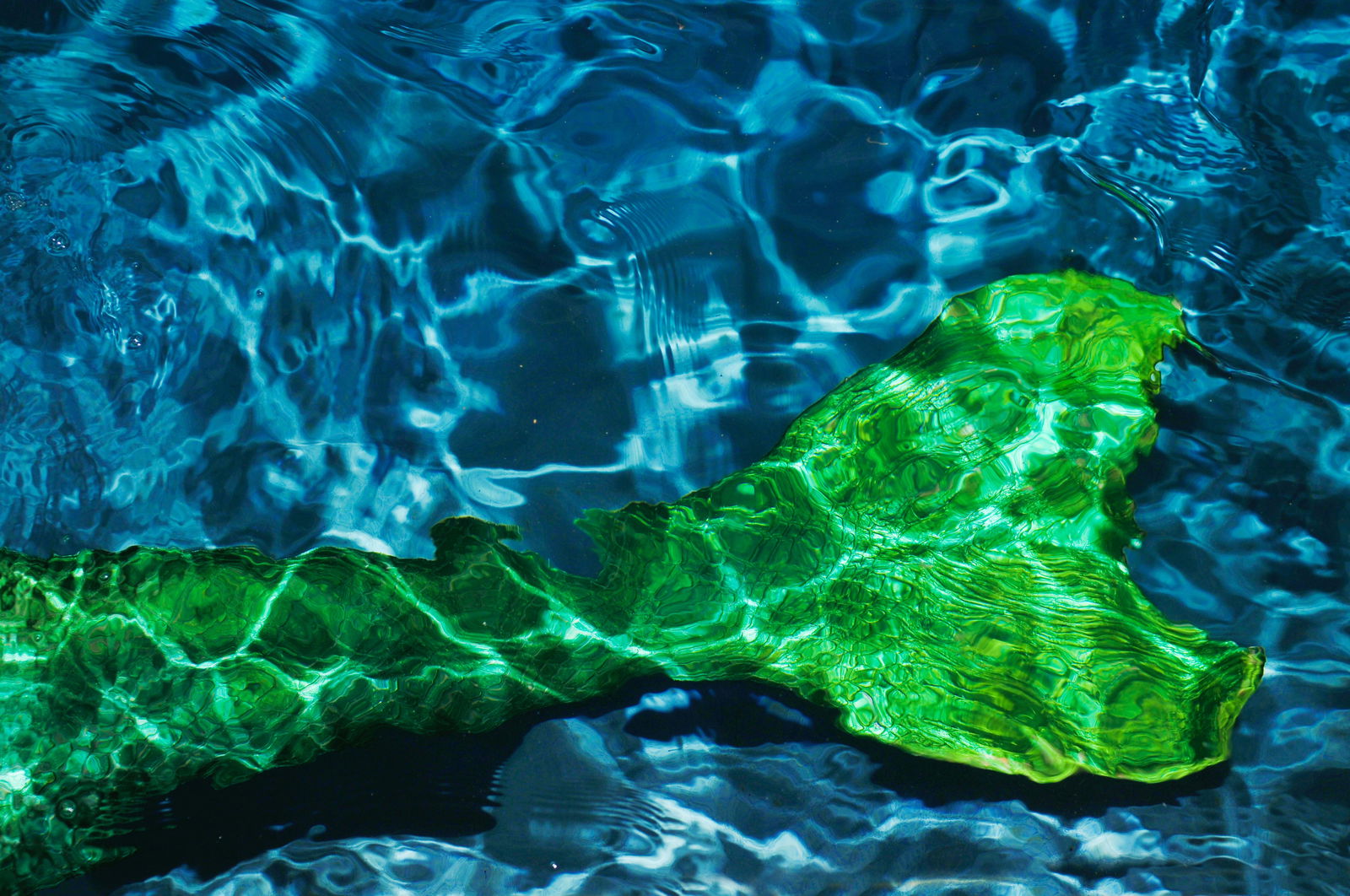
@annetteb, Unsplash
Fabric, neoprene and silicone are the most common tails on the market.
Advanced swimmers should be the only ones to use a silicone tail. This is because of the weight and the experience needed to manoeuvre if you plan to be swimming in the tail.
Fabric and neoprene tails are perfect for younger mermaids or those on a budget. Many photographers who offer mermaid packages will have loaner tails for your mermaid photoshoot.
Some photographers may shoot in the studio. Make sure you find a photographer that fits the look you desire. If you are looking to create a diverse portfolio, hire a few photographers to get a range. This will also help you learn from different styles.
Some photographers will only shoot in pools. Others are open water photographers. There will also be a large selection from land-only photographers if you are just looking for the surface shots.
If this is the first time you are shooting in your tail, practice putting it on prior to the day of your mermaid photoshoot.
Silicone tails are expensive and the last thing you want is a tear on the day of your shoot. If you are in any area with wildlife, cover your tail when it is not in use. I have seen vultures tear apart a silicone tail!
Joining underwater groups is a great way o get in touch with photographers, other models and workshops that train people to become mermaid models.
The underwater community can also answer any questions you may have. It is larger than you may realize and spreads across the world.
There is always someone willing to answer a question on how you can get your portfolio started.
If you are the photographer looking to get into this style, you will want to make sure of a few key issues. First, you will need to be comfortable underwater. This can be with scuba gear or simply holding your breath.
With my own clients, I prefer to come to the surface with them to communicate the next idea. Scuba tanks are not required on my shoots.
If we were submerging lower and in the ocean, this would be a whole new game. In the fresh water springs, tanks are not allowed by many state parks.
I have a certified lifeguard on location with clients. This is for the safety of the clients as well protection for my company.
If the client is fairly new to the mermaid world, swimming with a tail can be exhausting. I chose locations that have plenty of shallow areas as well.
This helps my client take a break. It also gives a second look at the background for shooting. In the image below all models could easily stand or kneel to take a break.
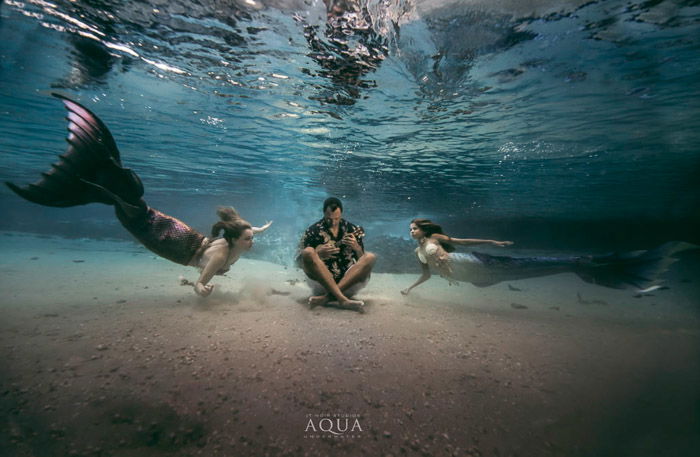
Photographer JT Aqua by Jennifer Tallerico
When shooting your client or model, make sure to get many angles. If the session is for a model, this will give her portfolio an edge. If it is for a client, you will have more options for an up-sell.
Side shooting is a favorite for mermaids to show off their amazing tails. They invested a lot of money and love into those tails. Make sure you showcase them.
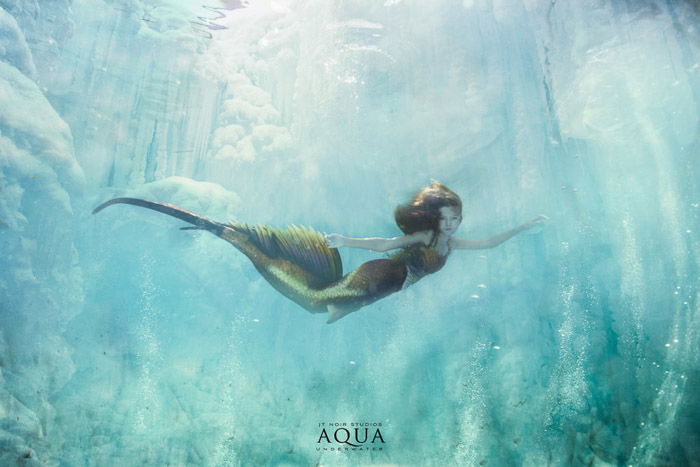
Photographer JT Aqua by Jennifer Tallerico
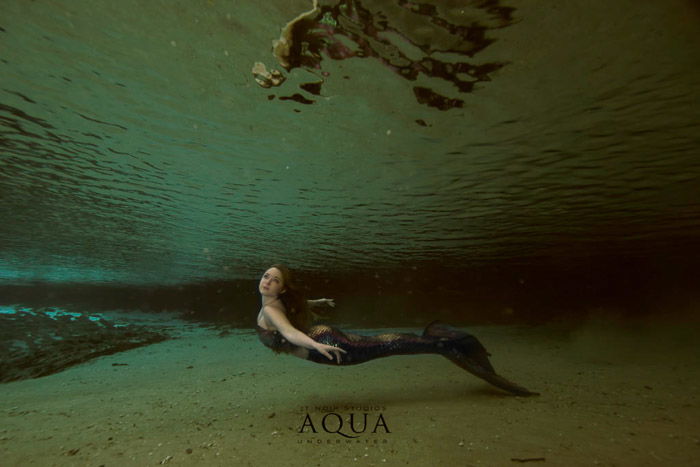
Photographer JT Aqua by Jennifer Tallerico
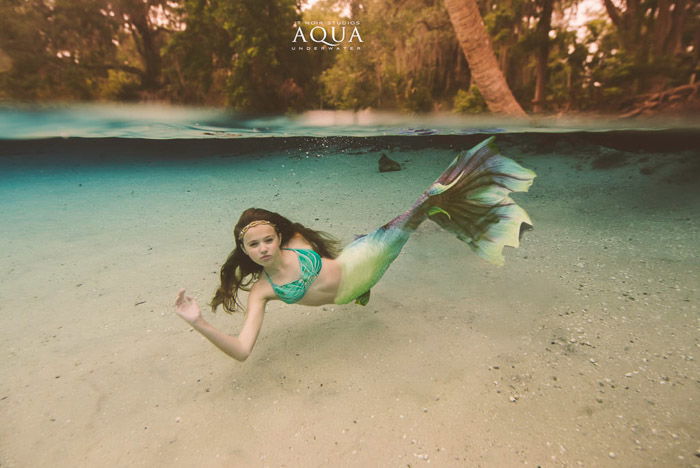
Photographer JT Aqua by Jennifer Tallerico Model- Florida Aqua Mermaid
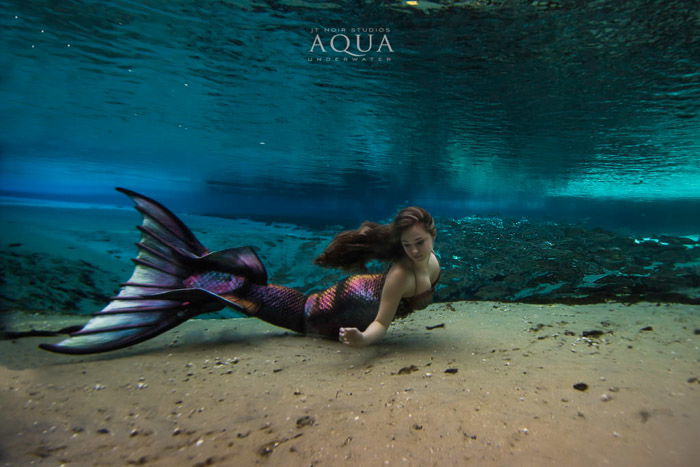
Photographer JT Aqua by Jennifer Tallerico
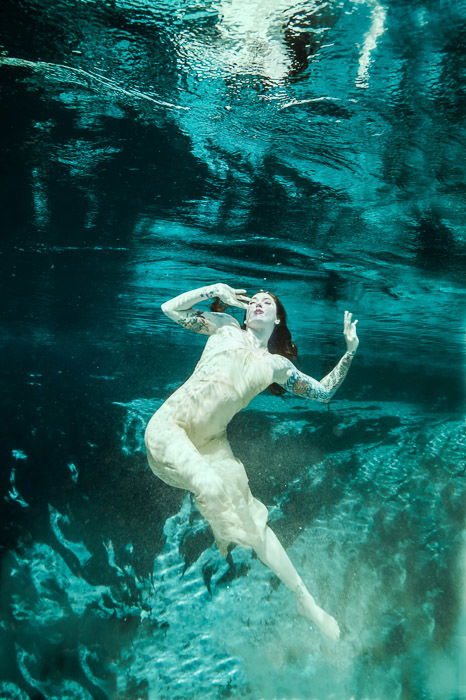
Photographer JT Aqua by Jennifer Tallerico
Modeling for fashion, print or studio needs to be acknowledged for the difficulty level. Long hours, minimal breaks, and in wardrobe not suited for relaxing. However, underwater modeling needs to be on top of all difficulty levels.
Not only do you need to understand how to swim in a 25+ lbs tail, you need to look amazing all while holding your breath. This is not to scare a potential mermaid photography model away, more just to make sure everyone understands it isn’t a walk in the park.
Children under the age of 15 should not swim regularly in a silicone tail. Their bodies are still developing and the weight can be too much for their structure, even for experienced swimmers.
The looks of the fabric and neoprene tails from The Mertailor are an incredible alternative for younger swimmers. This is also true for newer mermaids who are just starting out.
Silicone tails can range over two thousand dollars and more if customized. Starting out in a fabric tail is a great way to save money while you learn your new craft before you spend money for something that may not be for you.
There are also plenty of Facebook forums for buying and selling tails. Some models may be upgrading or getting out of the industry so it is a great place to find a great tail for less.
When choosing a tail and top, make sure to go through a reputable tailor. The Mertailor and Finfolk not only two of my favorites, but also the majority of mermaid models use these companies as well.
The type of silicone used is the first question you should ask your tailor. There is not just one silicone type and the better the quality the longer your tail will last.
While the quality of the tail is important, what ranks even higher is the swimming ability of the tail. Mono-fins are placed inside the tail. This is used to help your kick stroke. When the mono-fin is poorly designed, it will make swimming difficult.
It can also have long term effects on your body if used regularly. Research the company reviews so you know you will be using a tail with fins designed for swimming.
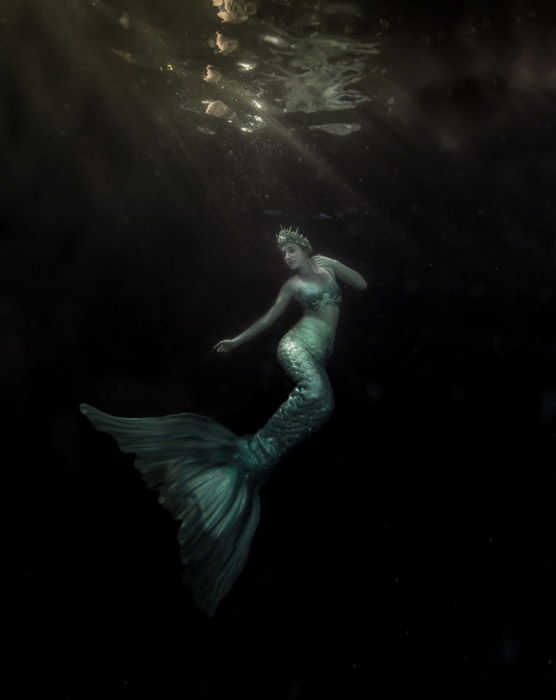
Photographer JT Aqua by Jennifer Tallerico
Now that you have decided to become a mermaid or the photographer for these sessions, the question is “is it profitable?” It can be in many areas.
If you are looking to make a business out of your talent, many mermaids will be hired for parties, events and for photographers portfolios. Touring can be helpful if you have the means to make it happen.
If you are on the other side of the camera, photographing mermaids can be highly beneficial. During summer months the locals will book sessions, and in the winter months I have many Canadian and Northern mermaids who visit for a mermaid photoshoot.
Marketing yourself as an underwater photographer on all your platforms will put you into the first page when models from out of town are looking for someone.
On my own site I have created an entire section for underwater work. This separate section or tab will help potential clients see your work without having to search in-between your other photography genres.
When hired for a session, make sure to have a contract in place to help you from any issues. If you are shooting an underwater maternity session, have your client get the check from her doctor. This is especially important if she is over seven months pregnant.
![]()
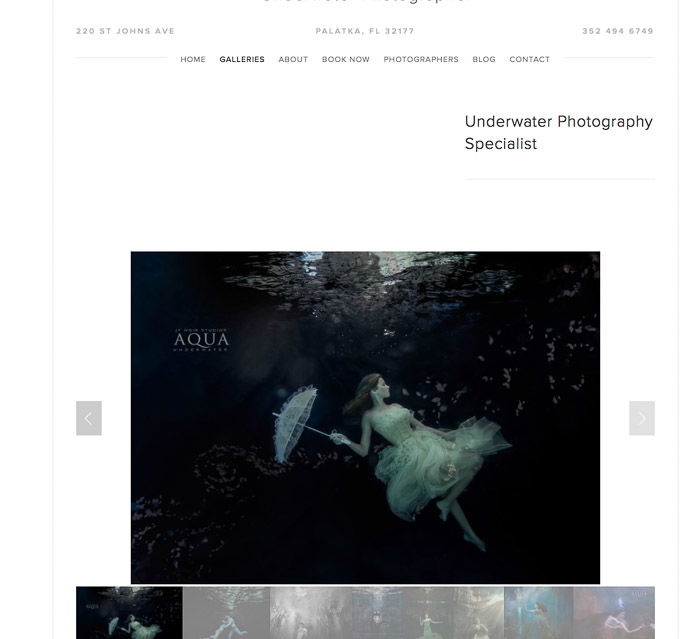
Many photographers and models join together in order to give back to their shooting environments.
The Underwater Woman teams up with many photographers around the world in order to bring awareness to the health of the oceans. Together they raise money for research and other projects simply by doing what they love.
Now that you have created your first mermaid photoshoot, you can see what you loved and where you would like to change it up.
If you are a model, your experience may push you into wanting to work on your posing. Or you might add some more embellishments to your mermaid look.
If you are the photographer, you may see now how you would want to expand on your shot list. Or you might incorporate more fantasy looks in composites.
A magical mermaid photoshoot experience is not a one time deal. It builds every time you shoot with every new idea. There are no limits to how creative you can be with mermaid photography whether above or below the surface.